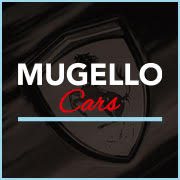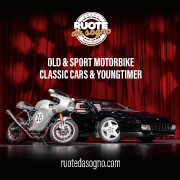Chassis No. 1451 GT Engine No.1451 GT Transmission No. 197 D GENESIS OF AN ICON The genesis of the remarkable 250 GT California Spider took place in the final days of 1957, when Ferrari's prominent West Coast importer John von Neumann recognized an unfulfilled niche in the American market. He envisioned a dual-purpose, open Ferrari targeted at affluent enthusiasts who craved a thoroughbred sports car that could simultaneously turn heads on Hollywood Boulevard and clinch victories on the racetrack with equal aplomb. This concept found a powerful ally in Luigi Chinetti, Ferrari's official New York-based importer, whose support would prove instrumental in bringing the ambitious project to fruition. Chinetti's unique influence transcended far beyond his position as Ferrariâs first importer in the U.S. As a three-time Le Mans winner (1932, 1934, and 1949) and the founder of North American Racing Team (N.A.R.T.), Chinetti brought unmatched competition experience and a close personal relationship with Enzo Ferrari. With Enzoâs endorsement, Scaglietti in Modena was given the green light to craft the now legendary California Spider. Where the concurrent 250 GT Cabriolet shared its shape and mechanicals with the 250 GT Coupe, the Spider was a direct evolution of the revered Ferrari 250 GT LWB (Long Wheelbase) Berlinetta âTour de Franceââone of the most significant models in Ferrariâs competitive history. Production encompassed two series on the Type 508 chassis platform before transitioning to SWB (Short Wheelbase) production in 1960. The initial LWB models were built on the Berlinettaâs 102 inch-wheelbase Type 508 C chassis while maintaining the Berlinettaâs Pinin Farina-designed body profile below the waistline. A second LWB series retaining the same 102-inch wheelbase, termed the Type 508 D, was produced from December 1958 to the end of 1959 in approximately 27 examplesâamounting to just 50 total LWB California Spiders. These later examples benefitted from the Type 128 D engine with reinforced connecting rods and crankshaft, revised rear wheel arches, and open headlights on some examples. Of these, a mere ten cars were supplied in the most desirable Competizione specification, with just eight of these wearing full aluminum coachwork and equipped with competition features. CHASSIS NUMBER 1451 GT Chassis number 1451 GT is the second of just eight aluminum-bodied Competizione examples, boasting an impeccable Le Mans history and representing one of the most significant competition Ferraris in existence. According to an exhaustive report compiled by Ferrari Historian Marcel Massini, its production began on 18 May 1959 when the Type 508 D chassis was dispatched to Carrozzeria Scaglietti in Modena for fitment of its aluminum coachwork. Meanwhile, its competition-specification, Type 508 D ribbed gearbox with a 3:55:1 final drive ratio, and outside-plug, Type 128 F engine topped with Testa Rossa high lift camshafts and triple Weber 40 DCL6 carburetorsâthe first of its kind fitted in a California Spiderâwere completed on 12 and 13 June respectively. Other unique competition features included a 9.6:1 compression ratio resulting in 262.5 horsepower, an external oil cooler, stiffer suspension, and a long-range, 35 gallon fuel tank with an external fuel filler cap. Final chassis assembly was completed on 15 June, a mere five days before the 1959 24 Hours of Le Mans where it was set to be campaigned by Chinettiâs N.A.R.T. in the hands of its first owner Robert âBobâ Grossman and co-driver Fernand Tavano. Grossman, who owned and operated franchises for Jaguar, Alfa Romeo, and Volkswagen in New York, had raced in SCCA events in the mid-1950s with considerable success including an SCCA G Production title. He had even campaigned another LWB California Spiderâlikely chassis 0919 GTâpurchased through Chinetti, but felt that he was unable to challenge the Corvettes in SCCA Class B competition. Chinetti promised a solution, delivering Competizione chassis 1451 GT through his Luigi Chinetti Motors. The Ferrariâs arrival to Circuit de la Sarthe was so hurried, in fact, that Grossman recalled in Stanley Nowakâs Ferrari California Spider that âa âflashâ of paint covered the primer and the unfinished seats were covered with ârags.ââ This, nor the fact that Grossman had never driven at Le Mans and his co-driver spoke little English, prevented him from achieving the single most successful result in a 250 GT California Spider in competition, with a remarkable fifth-place overall finish and third in the GT class at Le Mans. Following its racing debut, the Spider was returned to the factory where it was finished properly in metallic silver. The car was then imported to the United States later that summer where Grossman continued his impressive 1959 season behind the wheel of chassis 1451 GT, including a victory at SCCA National Races in Montgomery, New York. A protest at that event for using a ânon-standard oil coolerâ resulted in Grossman running the car in the D Modified class for the remainder of the season, which included a sixth overall and second in class finish at Thompson, Connecticut in September and participation in the Sixth Annual International Speed Weeks at Nassau, Bahamas in December. The event spanned five races over three days, and saw Grossman secure a first in class, a first overall, and the Governers Cup for both five-lap and twelve-lap races. The 1960 season proved even more successful, with Grossman securing outright victories at Marlboro (April and July), SCCA Nationals at Bridgehampton (May), and the Vanderbilt Cup at Roosevelt Raceway (June). He also achieved first in class at Virginia International Raceway that May, followed by notable second-place overall finishes at Thompson Nationals and Watkins Glen in September. The car's competition career concluded when Grossman opted to purchase the then newly-available 250 GT SWB Berlinetta Competizione, parting ways with chassis 1451 GT which he would not see again for 20 years. The car's whereabouts remained unrecorded until the early 1970s when it surfaced in the care of a Maryland banker. Subsequently discovered in Florida by collector Gerald Sutterfield, the car was authenticated by marque specialist Stan Nowak as Grossman's former Le Mans competition chassis. Though offered back to Grossman, it passed instead to Sidney Stoldt, a New Jersey-based VSCA member, who demonstrated the carâs sound mechanical condition at the time by driving it back north. The car reportedly passed to Connecticut-based collector Paul Pappalardo before selling to Jon Masterson of Long Beach, California in 1981. Under Masterson's ownership, the car immediately underwent a comprehensive restoration that would set new standards in Ferrari preservation. Opting for a period-correct Rosso Corsa finish with a tan leather-trimmed interior, other minor alterations were made from the car's original competition appearance, including the omission of the auxiliary lights, bug deflector, and roundel decals, while the previously removed external fuel filler was restored. The high quality of this restoration was validated through an impressive sequence of concours victories and competition appearances spanning more than a decade. The car's post-restoration debut at the 1983 Pebble Beach Concours d'Elegance secured First in Class for Postwar European through 1960 Open Cars, followed by Best of Show at the Ferrari Club of America Concours at Lake Lanier, Georgia in 1984. In 1986, the car captured Best of Show at the Palm Beach Concours d'Elegance, and its significance was further documented in Stanley Nowak's definitive work Ferrari Spider California. International recognition came through its appearance at the 1990 Bagatelle Concours in Paris, where it received the Franklin Mint Award. The car's dual-purpose nature was particularly evident in the 1990s, with Masterson campaigning successful outings at the Monterey Historics on four separate occasions and completing the challenging Colorado Grand in 1990. It also maintained a strong presence on the concours circuit, returning to Pebble Beach in 1994 for the dedicated Ferrari Grand Touring Spiders Class (M-2) and appearing at Cavallino Classic events into the 2000s. After nearly three decades of ownership, Masterson sold chassis 1451 GT to Martin Gruss of New York in 2007. The California Spider promptly resumed its active show circuit presence, making its first appearance under new ownership at the 2008 Palm Beach Cavallino Classic XVIII. That same year marked another significant milestone when the car received its Ferrari Classiche certification, confirming the authenticity of its original chassis, body, Type 128 F competition-specification engine, Type 508 D gearbox, and correct-type rear differential. The car continued to be exercised and shown in 2009, with participation in the demanding Copperstate 1000 and concours appearances at both the Ferrari Club of America National Meet at Elkhart Lake and the 5th Annual Masterpiece Concours in Milwaukee, Wisconsin. After taking part in the Cavallino Classic historic races at Palm Beach, Gruss undertook the significant decision to commission a complete restoration aimed at returning the car to its original Le Mans configuration. This comprehensive work was entrusted to the renowned Ferrari specialists at Wayne Obryâs Motion Products Inc., who completed the restoration in 2011. The California Spider made an impressive return to the show field that same year, debuting in its original competition livery at the Palm Beach Cavallino Classic XX where it secured a Platino award. The restoration was put through its paces during the Le 250 Tornano a Casa rally across France and Italy in 2014, before returning to Pebble Beach for a third time to take Third in the Ferrari Competition Class (M-2). In 2016, a fitting tribute to the car's competition heritage came at the 53rd Annual Ferrari Club of America National Meet in Columbus, Ohio, where it received the N.A.R.T. Award. Acquired by its current owner in 2017, the California Spider once again graced the Pebble Beach Concours d'Elegance in 2024, where it was prominently displayed at Casa Ferrari. THE EXEMPLAR: A CALIFORNIA SPIDER WITHOUT PEER Chassis 1451 GT, the second of just eight aluminum-bodied Competizione LWB California Spiders and the first to be equipped from the factory with the competition-specification Type 128 F engine, stands as the definitive example of Ferrari's legendary dual-purpose sports car. Its extraordinary debut at the 1959 24 Hours of Le Mans alone would secure its place in Ferrari competition history, yet it was merely the beginning of an illustrious career that would span both racing and concours excellence. From its numerous appearances at Pebble Beach to its participation in the worldâs most exclusive historic motoring events, chassis 1451 GT has consistently demonstrated the dual-purpose versatility that defines the California Spider legend. The car's exceptional status is furthered by its remarkable preservation of original components through multiple carefully considered restorations, as confirmed by its Ferrari Classiche certification. Few Ferraris of any era can match chassis 1451 GT's combination of period racing success, long-term preservation, and continued significance in concours venues. Its existence helps define the very essence of what makes the 250 GT California Spider so reveredâa car equally capable of securing podium finishes at Le Mans and best-in-show awards on the worldâs most exclusive show fields. In this way, chassis 1451 GT represents not just the finest example of its type, but stands as the very cornerstone of the California Spider's legendary status among the most significant road-going competition Ferraris ever produced.
- Fuel
- Body Types
- Transmission
- Exterior Colour
- Number of doors
- Interior Colour
- VIN Code1451GT














































































































































































































































































